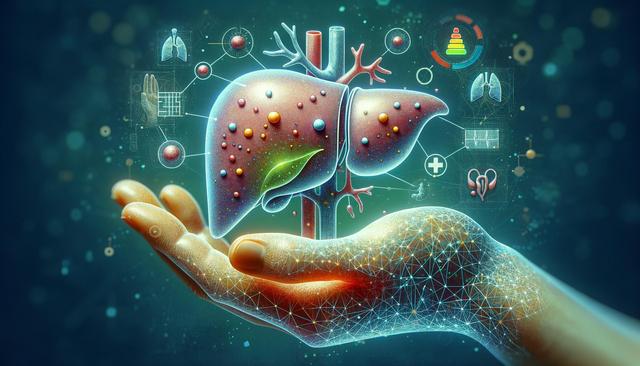
Understanding the Symptoms of Fatty Liver Disease
What Is Fatty Liver Disease?
Fatty liver disease, medically known as hepatic steatosis, occurs when fat builds up in the liver cells. While some fat in the liver is normal, excessive accumulation can lead to inflammation and damage. There are two main types: non-alcoholic fatty liver disease (NAFLD) and alcoholic fatty liver disease (AFLD). The former is not linked to alcohol consumption and is often associated with obesity, insulin resistance, and metabolic syndrome. Many people with fatty liver disease may not realize they have it until it’s discovered through routine blood tests or imaging studies. Understanding the condition is the first step in recognizing its potential impact on health.
Fatty liver disease can progress silently over time. In its early stages, it may not cause noticeable symptoms, which makes it difficult to detect without medical evaluation. As the disease advances, it can lead to liver inflammation (steatohepatitis), fibrosis, and eventually cirrhosis if not managed properly. This underscores the importance of awareness and regular health check-ups, especially for individuals at higher risk.
Common Early Symptoms to Watch For
In its initial phase, fatty liver disease might not present any symptoms at all. However, as fat accumulates and the liver becomes more strained, some early signs may begin to emerge. Being alert to these changes can prompt timely medical consultation and intervention. Common early symptoms include:
- Persistent fatigue or unexplained tiredness
- Mild discomfort or dull pain in the upper right abdomen
- Unexplained weight loss
- General feelings of weakness
Often, these symptoms are subtle and may be mistaken for other minor health issues or lifestyle-related fatigue. It’s important to consider your overall health context, including diet, physical activity, and any underlying conditions like diabetes or high cholesterol, which are linked to fatty liver development.
Signs of Disease Progression
As fatty liver advances to more severe stages, the symptoms become more pronounced and harder to ignore. This progression from simple steatosis to steatohepatitis, fibrosis, and eventually cirrhosis occurs gradually. Indicators of advancing disease include:
- Yellowing of the skin and eyes (jaundice)
- Dark-colored urine
- Swelling in the abdomen (ascites) and legs
- Increased bruising or bleeding
- Confusion or difficulty concentrating (hepatic encephalopathy)
These symptoms suggest that liver function is becoming significantly impaired. At this stage, medical evaluation and management become urgent. Imaging tests such as ultrasounds, CT scans, and MRIs or liver biopsies may be required to assess the extent of liver damage.
Who Is at Risk?
Certain individuals are more likely to develop fatty liver disease due to lifestyle, genetic, or medical factors. Recognizing these risk factors can help in early detection and preventive care. Populations at increased risk include:
- People with obesity or overweight
- Individuals with type 2 diabetes or insulin resistance
- Those with high cholesterol or elevated triglycerides
- Individuals consuming high amounts of processed foods or sugary beverages
- People with a sedentary lifestyle
Additionally, some individuals may be genetically predisposed to accumulate fat in the liver. Family history, ethnicity (some populations are more susceptible), and age can also influence risk. Regular screening and lifestyle assessments are particularly important for those in higher-risk categories.
Steps Toward Prevention and Management
While fatty liver disease can be a serious condition, it is often manageable and even reversible, especially in its early stages. Lifestyle changes play a crucial role in both preventing and treating the disease. Key strategies include:
- Adopting a balanced diet rich in vegetables, whole grains, and lean proteins
- Reducing intake of added sugars and refined carbohydrates
- Engaging in regular physical activity—aim for at least 150 minutes of moderate exercise per week
- Achieving and maintaining a healthy weight
- Limiting or avoiding alcohol intake
In some cases, healthcare providers may recommend medications to address underlying conditions such as high cholesterol, diabetes, or inflammation. Regular monitoring through blood tests and imaging is also essential to track liver health over time.
Conclusion
Fatty liver disease is a growing health concern, often progressing silently until more serious complications arise. By understanding the symptoms—from subtle fatigue to more severe signs like jaundice and swelling—individuals can take proactive steps toward diagnosis and management. Maintaining a healthy lifestyle, staying informed about risk factors, and seeking regular medical advice are crucial for long-term liver health. Early action makes a significant difference, especially in preventing the condition from advancing to irreversible stages.


